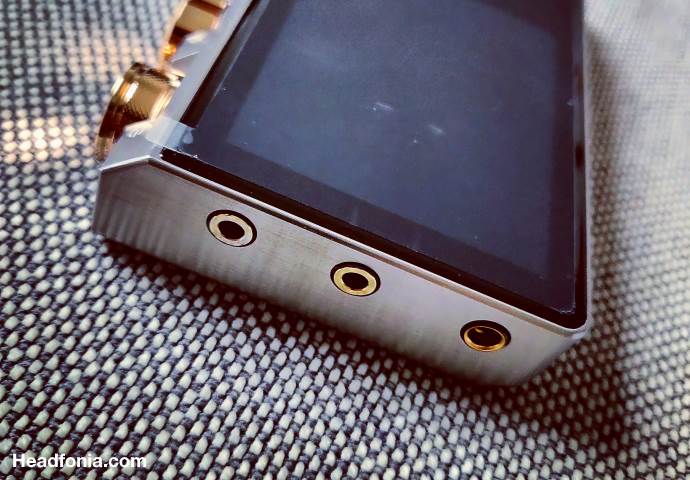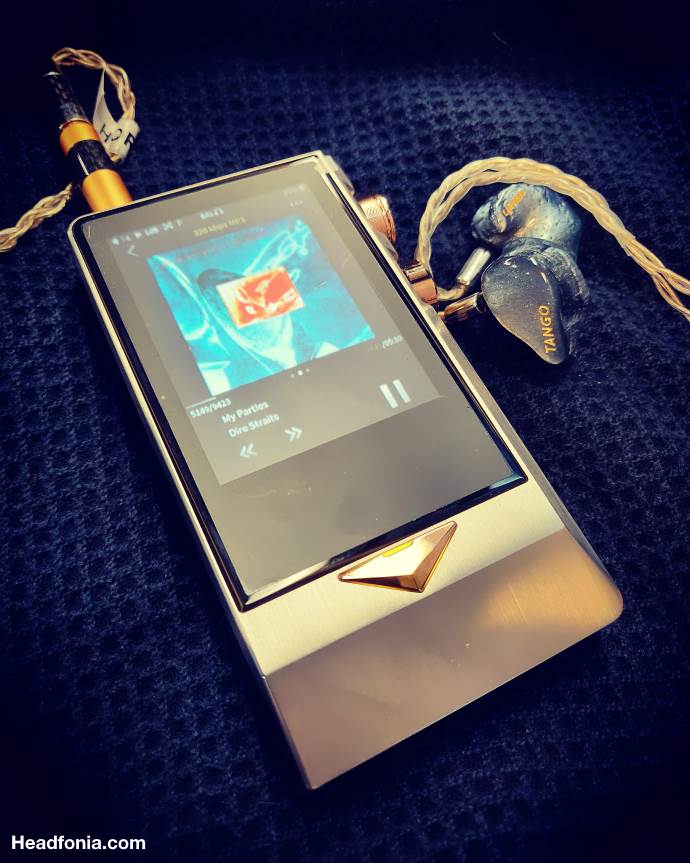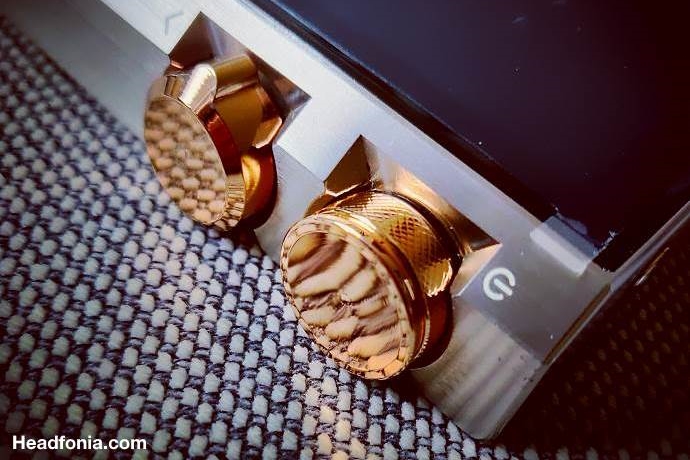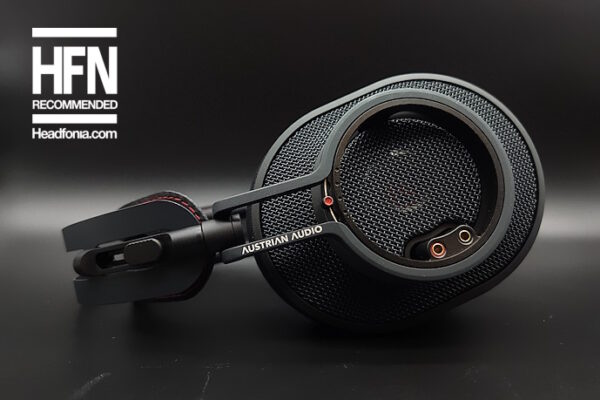Versatility
Cayin’s N5ii in example is one of the most versatile units in the product-line up as it’s a “full” Android DAP. DLNA, OTG, Apps like Tidal and Spotify,… you name it and the N5ii does it all. Now the N8 in this regards isn’t like that at all. As said, the Wifi only is there to update the FW OTA, and that’s it. There’s no Tidal or direct DLNA to your NAS or music server and to be honest that to me is the biggest downside.
Yes, the N8 does have HiBy(Link) connect, LDAC, Duplex BT, aptX, a dual line-out and more digital outputs than you could dream off. So I guess there are ways to bypass the N8 and connect to your NAS at home but to me, in the way I use my DAPs, it’s just not the same. Others might completely disagree with me as they find these things more important, so again this is something personal.
Cayin has gotten back to me about their APK limitation: “Cayin believes using your mobile phone to run steaming app and use the N8 as a wireless DAC offers a more reliable service. With LDAC in place, the quality of wireless playback is satisfactory for streaming purpose.”
Like I admitted before though, I really feel like the N8 is part of my desktop system, so I do have to give them that. And the Digital interfaces really are comprehensive with I2S, USB Audio, S/PDIF coaxial output and USB DAC

Menus & Play back screens
Main Menu: Folders – List – Songs – Artist – Albums – Genre.
I have to say the N8 read my 200gb card and all its tags really well, including the album art. It’s also nice that the N8 displays if your file is High Resolution or Lower Quality, it’s something I appreciate as I often have different bitrate album version stored for testing.
The Play Screen has 3 options: Album art, Lyrics and file type info. On the play screen you on the top will also find 3 dots that make an option bar pop up. In this bar you can set the play mode, check the current play list, favorite a song, add it to a play list or even delete it. It’s easy and it works well.
The swipe down menu then, it has 8 quick settings:
Gain Setting – Tube/SS – STD/High² – Balance PO/LO – Replay gain – USB Mode – Digital Output – DSD Output
Under that you have the screen brightness slider and the other menus: Music Setting – System Setting – About
Music Setting: Play Mode – DSD output – DSD Gain – Breakpoint Resume – Gapless – Max Volume – Startup Volume – Fade in/out – Balance – PCM Filter – EQ – Play through folders – Play through Albums – Album Art
System Settings: WiFi – BT – Language – Font Size – Backlight Time – Lock Screen – Key Lock – LED – Idle shutdown – Scheduled Power off – Reset – System Upgrade
N8 Sound
According to Cayin I’m one of the few guys to have listened to all the preproduction versions as well as the final version but the N8 sound-wise had me hooked from the beginning. But it was at Canjam London where I really had time to listen to the last preprod version, and that’s when the N8’s musical tube output really convinced both Berkan and myself.
Let’s split up this part by output
First, the 3.5mm solid state output, basically the standard output of the N8.
This is the real, typical solid state output. It delivers punch power and everything has impact and control. For a solid state output it is very musical but it isn’t as musical and smooth as the tube output is, logically. The SS headphone out at this level of course is clean and precise, if not it wouldn’t be a high end unit. At the same time it isn’t the neutral and analytic kind of sound you expect form a flagship. It’s more musical, full bodied and comes with a smooth delivery. Something that will strike you right from the start is the excellent stereo image and L/R balance.
Bass is somewhat elevated but not too much. The detail and layering is good, as well as the separation. The mids are detailed, well layered and have that smooth, musical delivery. It’s maybe my favorite part of the N8, though the bass section isn’t far behind. There are DAPS that present more air and spaciousness but the N8 is no slouch here either. The solid state treble section is energetic and lively, but like the bass and mids it has this musical twist and slight smoothness so it will never sound harsh or sibilant or aggressive.

Second, the 3.5mm tube driven output
The tube flavour is different, and if you like tubes you will like this output. The result: an even smoother, warmer, richer and romantic sound. You get really good, though lifted, bass in combination with sweet mids (warmth) and soft treble soft treble. The layering, and richness is excellent and if your IEM is a bit too aggressive or harsh sounding on tube, this output will take perfect care of that. The most impressive part is how the Nutube combines the tube characteristics with a very good level of precision and detail. I don’t always use the tube output and it really depends on the IEM I’m listening to, but with the right match, you’re in audio heaven.
If you’re used to listening to real tube amps you should know that the 6P1 does a good job but it’s not like “real tubes” on a high end amp. And of course you can’t tube roll, now if that was possible I’d go probably go crazy. That being said the 6P1 Nutube is doing a very good job replacing the old stuff and I love the fact that Cayin decided to implement it.
The 3.5mm output, both solid state as well as the Nutube one, are silent.
Third, the 4.4mm balanced output
The balanced output is a little more noisy with really sensitive gear but it’s nothing you will notice when you’re listening to music, even at low volumes. As expected for a top level balanced output, you get a more balanced sound from bass to treble but you also get a more spacious presentation and that’s something I really like myself. With the balanced output you also get a better sense of 3-dimensionality and positioning and lovers of classical musical for sure will appreciate that.
The layering improves in general and if you find the solid state output to “normal” and the tube output “too smooth and warm”, then this balanced output just might be the ideal output for you.
What I really like is the fact that all of the N8’s outputs are very musical, and if I’m not mistaken that was one of the requirements and goals of the N8. Mission accomplished! If you want to know even more on sound you will find that in the part where we compare it to its closest competitors.

Non-headphone outputs
Using the N8 as DAC is easy. Depending on the source in use you might or might not need to install drivers. I had to but once they installed the N8 was immediately recognized and Roon had no problems connected to it. The DAC screen also shows you the bitrate and bitdepth it is receiving from the source.
I have used the N8 as DAC for days in my office and it never acted up. Sound-wise it depends what output you have your ear- or headphone connected to, so you can find the description of that above.
One of Cayin’s USPs is the fact that the N8 fits right in to your home system and with the Line-out and it’s digital outputs it does just that. You can use any DAC or AMP you want with it and for me it’s mostly the LO which sees a lot of usage. The DAC inside these high end units are so good that you get a really good signal and if you don’t have a desktop DAC, you can still experience high end sound.
If you do have a good DAC at home or for on the go, then you can always use the N8 as a source only, and it does that perfectly fine as well. With the excessive accessories set the N8 comes with you’ll find hooking it up to your gear very ease. The only thing missing: a simple 3.5mm to RCA cable, but we’ll let that slip.
If there’s something I don’t like it is using my phone as a source or streamer. So I really prefer not to talk about the BlueTooth/aptX/LDAC implementation or the HiByLink connect Cayin suggests to use to stream music from Spotify or Tidal via your phone to this DAP. I’m sure it all works very well but it isn’t my thing or expertise to judge wireless connections. I like my cables and even to the wireless sound constantly keeps getting better, I’ll use a nice cable anytime.
Comparisons and conclusions can be found on the last page of this review. Click HERE








Tsvetan Goshev
€3.4K ? IN UK you can get it for £2,599.00 ~ €2.9K
I so want to pair N8 with my MDR-Z1R’s.I was thinking about it , but at the end for the same price bought 21.000km Ducati Monster S2R 1000.
TakTak59
Just got mine, now i will be in search for the best possible match (IEM or full size headphone) to get with my N8 the best combo.
Any clue ? Maybe the Meze Empyrean ?
Andy
Hi,
Any idea if Cayin N8 pairs well with Unique Melody Mest in terms of distortion from noise floor (balanced, tube and SE mode)?
Lieven
Sorry we don’t have the N8 with us anymore